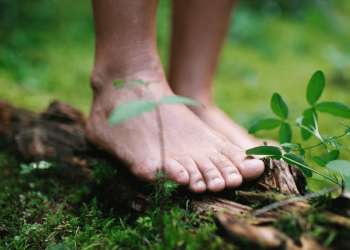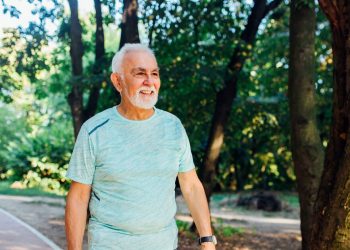In our fast-paced modern world, walking has become merely a means of transportation a mechanical action we perform without thought as we rush from one destination to another. Yet within this simple act lies a profound opportunity for transformation. Mind body walking, an ancient practice experiencing a contemporary renaissance, invites us to rediscover walking as a holistic experience that unites physical movement with mental awareness, creating a moving meditation that nourishes both body and spirit.
The Fundamental Mind-Body Connection in Walking
Walking is perhaps the most natural human movement, encoded into our very biology. From the moment we take our first tentative steps as toddlers, walking becomes an automatic function, controlled by the sophisticated neural networks in our brain and spinal cord. Yet this automaticity, while efficient, causes us to disconnect from the rich sensory experience that each step offers.
The mind-body connection in walking operates on multiple levels simultaneously. Neurologically, the rhythmic pattern of walking engages both hemispheres of the brain, creating a bilateral stimulation effect similar to EMDR therapy. This synchronized movement can help process emotions, reduce anxiety, and promote mental clarity. The repetitive nature of walking also allows the brain to shift from its usual active problem-solving mode into a more receptive, creative state—what researchers call the “default mode network.”
Physiologically, walking activates a cascade of beneficial responses throughout the body. The cardiovascular system increases blood flow, delivering oxygen and nutrients to every cell, including brain cells. The lymphatic system, which relies on movement to circulate, begins to flush toxins more efficiently. Endorphins and other neurochemicals associated with wellbeing flood the system, naturally elevating mood and reducing stress hormones like cortisol.
What makes mind body walking distinct from ordinary walking is the intentional awareness we bring to this process. Rather than allowing the mind to wander aimlessly or remain trapped in worries about the past and future, we consciously direct our attention to the present moment experience of walking itself. This transforms a mundane activity into a powerful practice of embodied mindfulness.
Integration Techniques: Bringing Unity to Movement
The practice of mind body walking encompasses various techniques that help integrate physical sensation with mental awareness. These methods, drawn from traditions spanning Buddhism, yoga, qigong, and contemporary mindfulness practices, offer different pathways to the same destination: a unified experience of walking.
Breath-Synchronized Walking
One of the most accessible integration techniques involves coordinating your breath with your steps. Begin by establishing your natural walking rhythm, then notice your breath. You might inhale for three steps and exhale for three steps, or find whatever ratio feels comfortable and sustainable. This synchronization creates a rhythmic meditation, anchoring your attention in the here and now. As you practice, the breath and movement become inseparable, dissolving the artificial boundary between body and mind.
The breath serves as a bridge between the voluntary and involuntary nervous systems. By consciously working with breath while walking, we gain influence over our autonomic state, shifting from sympathetic (fight-or-flight) to parasympathetic (rest-and-digest) nervous system dominance, promoting deep relaxation even while in motion.
Sensory Awareness Walking
Another powerful technique involves systematically engaging each sense. Begin with the sensation in your feet feel the heel strike the ground, the weight roll through the foot, and the toes push off. Notice the texture beneath your feet, whether soft earth, hard pavement, or smooth floor. Expand awareness to your legs, feeling the muscles contract and release, the joints articulate and support.
Move attention upward through your body the swing of your arms, the position of your spine, the position of your head. Then expand outward: What do you hear? The rustle of leaves, distant traffic, bird songs, your own breath? What do you see? Notice colors, shapes, movement, light and shadow—not labeling or judging, simply observing. What do you smell? Fresh air, flowers, earth after rain? This sensory immersion roots consciousness firmly in bodily experience.
Walking Meditation Practice
In formal walking meditation, often practiced in Buddhist traditions, the pace slows dramatically. You might take a full breath or more for each step, breaking down the walking motion into distinct phases: lifting, moving, placing, shifting weight. This micro-awareness reveals the complexity within simplicity, the countless sensations and movements that comprise a single step.
While walking slowly, you might focus on a specific contemplation, such as loving-kindness. With each step, silently offer phrases of goodwill: “May I be peaceful, may I be healthy, may I be safe.” This combines physical practice with intentional mental cultivation, literally walking yourself into a more compassionate state of being.
Nature-Based Walking Practice
Walking in natural settings amplifies the integrative effects of mind body practice. Research shows that time in nature reduces rumination, the repetitive negative thinking associated with depression and anxiety. The Japanese practice of “forest bathing” or shinrin-yoku demonstrates measurable physiological benefits from slow, mindful walking among trees reduced blood pressure, lower stress hormones, enhanced immune function.
When practicing mind body walking in nature, allow yourself to move at nature’s pace rather than urban speed. Pause to touch the bark of a tree, listen to flowing water, observe an insect’s journey across the path. Let natural rhythms guide your own, remembering that you are not separate from nature but an integral part of it.
Body Scan While Walking
Bring the traditional body scan meditation into motion by systematically moving awareness through your body as you walk. Spend several steps attending to your feet, then ankles, then calves, gradually working upward. This technique is particularly valuable for people who struggle with seated meditation, as the physical movement provides enough stimulation to keep attention engaged while still cultivating deep mindfulness.
The Multifaceted Benefits of Unified Practice
When we practice walking as an integrated mind-body activity rather than a purely mechanical one, we unlock benefits that extend far beyond basic cardiovascular fitness. These advantages span physical, psychological, emotional, and even spiritual dimensions.
Physical Health Benefits
While any walking provides exercise, mind body walking optimizes physical benefits through enhanced body awareness. Practitioners naturally develop better posture and alignment as they tune into how their body feels. This awareness helps prevent injury and can alleviate chronic pain, particularly in the back, hips, and knees. The stress-reducing effects of mindful walking lower blood pressure, improve heart health, and boost immune function more effectively than mindless exercise.
The gentle, sustainable nature of walking meditation makes it accessible across fitness levels and ages. Unlike high-intensity exercise that can sometimes stress the body, mind body walking nurtures the body, making it a practice that can last a lifetime. Many practitioners report improved sleep quality, better digestion, and increased overall vitality.
Mental and Cognitive Enhancement
The cognitive benefits of mind body walking are substantial and scientifically documented. Regular practice enhances focus and concentration, training the mind to sustain attention through the practice of repeatedly returning awareness to present-moment experience. This mental discipline transfers into daily life, improving performance in work, study, and creative pursuits.
Walking meditation also promotes neuroplasticity the brain’s ability to form new neural connections. The combination of physical movement, breath regulation, and focused attention stimulates brain regions associated with learning, memory, and executive function. Studies show that regular walking, especially when combined with mindfulness, may help prevent cognitive decline and support healthy brain aging.
The rhythmic bilateral movement of walking facilitates problem-solving and creativity. Many great thinkers, from Aristotle to Steve Jobs, incorporated walking into their creative process. When we stop trying to force solutions and instead walk mindfully, the relaxed yet alert state of consciousness allows insights to emerge organically.
Emotional Regulation and Psychological Wellbeing
Perhaps the most immediately noticeable benefits of mind body walking appear in emotional and psychological domains. The practice serves as a powerful tool for managing anxiety, depression, and stress. By grounding awareness in bodily sensation and present-moment experience, walking meditation interrupts the cycles of rumination and worry that fuel psychological distress.
The practice cultivates equanimity a balanced, non-reactive state of mind. As you walk, you inevitably encounter discomfort: tired legs, restless mind, difficult emotions. Rather than running from these experiences, mind body walking teaches you to meet them with gentle awareness. This skill of “being with what is” becomes invaluable in navigating life’s challenges.
Regular practitioners often report a greater sense of inner peace, improved mood, and enhanced emotional resilience. The practice doesn’t eliminate life’s difficulties, but it changes your relationship to them, creating space between stimulus and response where choice and wisdom can emerge.
Spiritual Development and Connection
For many practitioners, mind body walking becomes a spiritual practice a pathway to something greater than the individual self. The simple act of walking mindfully can evoke profound experiences of interconnection, dissolving the illusion of separation between self and world.
Walking meditation cultivates presence, and in deep presence, many discover a sense of the sacred in the ordinary. A simple step becomes miraculous when you truly pay attention—the extraordinary coordination of systems, the relationship between body and earth, the fleeting nature of each moment.
Different traditions frame this aspect differently: Buddhist walking meditation as a path to enlightenment, Christian labyrinth walking as communion with the divine, Indigenous walking practices as connection to ancestral wisdom and the living land. Regardless of the framework, mind body walking offers a gateway to experiencing life as meaningful, purposeful, and fundamentally interconnected.
Integrating Mind Body Walking into Daily Life
The beauty of this practice lies in its accessibility. Unlike meditation practices that require special equipment, specific locations, or dedicated time blocks, walking is something most people do every day. The invitation is simply to do it consciously.
Start small. Choose one walk per day perhaps from your car to your office, or around the block before dinner to practice mind body awareness. Let this be your moving meditation. Over time, you may find yourself naturally bringing this quality of presence to more of your walking, until eventually, the distinction between “practice” and “life” dissolves.
Some days your mind body walking might be slow and formal, a dedicated meditation practice in a peaceful setting. Other days it might be your commute, transformed by breath awareness and sensory attention. Both are valid. The practice adapts to fit your life rather than requiring your life to conform to the practice.
Conclusion: Walking the Path
Mind body walking represents a return to wholeness, a healing of the modern split between thinking and feeling, mind and body, self and world. In a culture that often treats the body as merely a vehicle for the brain, this practice reminds us that we are embodied beings, and our physicality is not separate from our consciousness but the very ground of it.
Each step becomes an opportunity for awakening, each breath a chance to arrive fully in this moment, this body, this life. The path beneath your feet is always here, always now, waiting to be walked with awareness, curiosity, and care.
The ancient wisdom traditions understood what contemporary neuroscience now confirms: we cannot separate mind from body, thought from feeling, self from environment. Mind body walking honors this fundamental unity, offering a simple yet profound practice for navigating modern life with greater ease, clarity, and joy. All that’s required is the willingness to take the next step mindfully, whole-heartedly, one breath at a time.






